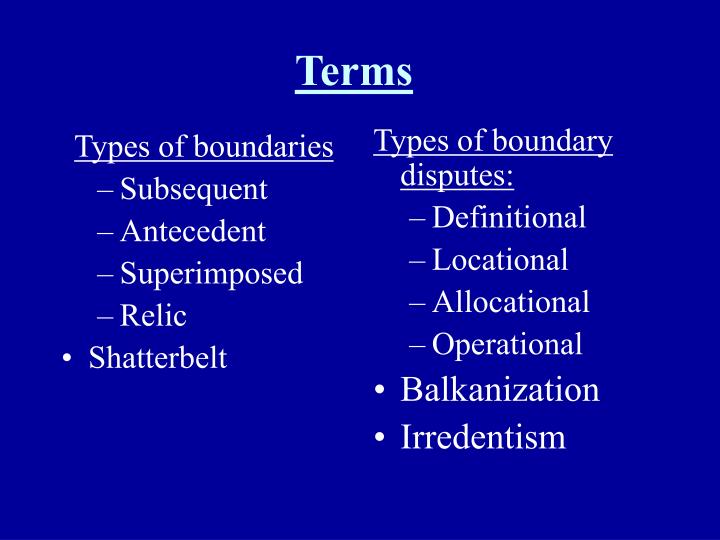

What Type of Boundary is the US and Canada? (See Which Settlers migrated to the Backcountry and Why?) 7. The Atlantic Ocean and the Gulf of Mexico are also part of the USA’s antecedent boundaries. Yes, the USA has antecedent boundaries with Canada, Mexico, and the Pacific Ocean. Geometric boundaries are man-made, whereas antecedent boundaries are natural. The difference between geometric boundaries and antecedent boundaries is that geometric boundaries are straight, while antecedent boundaries are curved and irregular. An antecedent boundary is a boundary created before the settlement of people in that area. What is the Difference Between Geometric Boundaries and Antecedent Boundaries?Ī geometric boundary is a political boundary on a clear and neat geometric shape. Antecedent boundaries are usually natural boundaries and not political boundaries, unlike relic boundaries. A relic boundary is a boundary that was formed after the current political boundaries were established.

What is the Difference Between an Antecedent and Relic Boundary?Īn antecedent boundary is a boundary that was formed before the current political boundaries were established. (See What body of Water connects Gulf of Mexico and Caribbean?) 4. What is an Example of Antecedent Boundary?Īn example of antecedent boundary is the Missouri river in North Dakota, defining the boundary between the state’s Native American reservations and its non-reservations areas. Must read What is a Subsequent Boundary in AP Human Geography? 3. It tells us what our ancestors did when creating their borders. Antecedent boundaries in AP Geography are important because they help us understand how states evolved over time and why some people live where they do today. In other words, it’s the border that existed before any changes were made to it and in many cases, it’s also the name of a current region or country. What are the Antecedent Boundaries of AP Human Geography?Īn antecedent boundary is the original borders of a country. (See How many countries share a border with Germany?) 2. In some cases, the people of a state may have an informal preference for an antecedent boundary because it allows them to retain certain aspects of their cultural identity. Antecedent boundaries are created when two or more countries have overlapping ownership of land, rivers, and seas. An antecedent boundary is created before a country is formed and these are natural boundaries. What is an Antecedent Boundary?Īn antecedent boundary is a political boundary that pre-dates a natural or cultural feature. Let’s start this article and learn some more about these boundaries. An example of antecedent boundary is not unique to one region or country, but they are more likely to occur in areas that were settled first by indigenous people and later colonized by Europeans in the 16th century. An antecedent boundary is the most common type of boundary in the United States due to its emphasis on native rights. Boundaries are often used to describe the extent of geographical areas in maps and diagrams.

The model hereby discloses previously unsuspected mechanistic links between data about persistence and afterimages, and helps to clarify the sometimes controversial issues surrounding distinctions between persistence, residual traces, and afterimages.In geography, a boundary is a natural or man-made division between two areas of land or water. Simulations also show that the same mechanisms explain properties of residual traces, which increase in duration with stimulus duration and luminance. Simulations show that the model reset signals generate orientational afterimages, such as the MacKay effect, when the reset signals can be grouped by a subsequent boundary segmentation that generates illusory contours through them. Thc present article reveals further evidence for the neural mechanisms used by the theory. In particular, the model simulated the decrease of persistence duration with an increase in stimulus duration and luminance. Using a neural network model of boundary segmentation and reset, Francis, Grossberg, and Mingolla (1994) linked the percept of persistence to the duration of a boundary segmentation after stimulus offset.


 0 kommentar(er)
0 kommentar(er)
